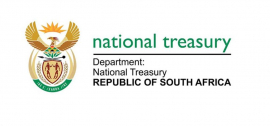
The National Treasury has sought to clarify the details of the Gold and Foreign Exchange Contingency Reserve Account's (GFECRA) new settlement agreement.
In the 2024 Budget Review, Treasury announced a reform to the settlement framework for the GFECRA.
The Minister of Finance and the Governor of the South African Reserve Bank (SARB) signed a new GFECRA settlement agreement in June 2024.
The agreement allocates funds across three “buckets,” with the first bucket being allocated to GFECRA to retain sufficient funds to absorb exchange rate swings.
“Failure to do so would create an obligation for the National Treasury to cover exchange rate losses. In terms of the agreement, a R250 billion distribution will be made from the GFECRA.
“Of this amount R100 billion was paid into a second bucket for the SARB contingency reserve account, to ensure the central bank’s solvency and to pay sterilisation costs to neutralise the interest rate impact,” National Treasury said on Tuesday.
The balance of R150 billion will be paid to the National Treasury in tranches of R100 billion (2024/25), R25 billion (2025/26) and R25 billion (2026/27).
“This will be used to reduce government’s borrowing and therefore the growth in the stock of debt. The impact of the GFECRA settlement on the budget was presented in Table 7.2 of the Budget Review – financing of national government gross borrowing requirement – and disclosed over the medium-term as a balance sheet transaction reducing the borrowing requirement.
“The treatment of the transaction will remain the same in the 2024 Medium Term Budget Policy Statement (MTBPS), as well as in future budget publications. The distribution from GFECRA (R250 billion) is recorded as a return on an investment, which is a balance sheet transaction.
“This is not recorded as revenue of government. Funds are paid from the SARB into governments bank account (the National Revenue Fund) and from this account the cash is used to pay government’s commitments and to provide for the contribution to the SARB contingency reserve account (as required in terms of GFECRA Defrayal Amendment Act, Act no 27 of 2024),” National Treasury said.
Flow of funds
To comply with both the requirements of the Public Finance Management Act (PFMA), Act no 1 of 1999 and the GFECRA Defrayal Amendment Act, Act no 27 of 2024, the flow of funds for the SARB contingency reserve account of R100 billion, requires a payment into and withdrawal from the National Revenue Fund (NRF – the bank account of government).
“However, this does not imply that the amount is recognised as revenue, as it remains a balance sheet flow. In other words, government converts the GFECRA investment into cash (in the NRF), which is then used to fund the SARB contingency reserve. All these transactions are recorded on the balance sheet.
“In the monthly Statement of National Governments’ Revenue, Expenditure and Borrowing published in terms of section 32 of the PFMA, the cash flow position of government is presented in tables 1 to 4 of the release.
“In these tables, which presents the flows into and withdrawals from the bank account (NRF) of government, the R200 billion received from the SARB is shown as Exchequer revenue (the cash receipt) and the payment to the SARB as a departmental requisition of R100 billion,” National Treasury said.
This means that R200 billion in cash from an investment was received into the bank account of government, of which R100 billion was requisitioned by the Department of the National Treasury to contribute to the SARB Contingency Reserve Account.
“The balance of R100 billion remains as a positive balance that is used to reduce the gross borrowing requirement. Reducing the borrowing requirement implies that government is using the cash to borrow less, as is required in terms of the GFECRA settlement agreement.
“The Budget of government is presented on the adjusted cash basis of accounting. Revenue and expenditure are recorded when transactions are initiated in the cashbook, in other words when a transaction is processed in the financial system,” National Treasury said.
The monthly budget comparable revenue and expenditure information is published in the summary statement of the section 32 report.
“This format mirrors the presentation of the 2024 Budget, which remains as the budget presentation for the 2024 MTBPS and future budget publications. In this table the cash flows of government are recorded as part of Changes in cash and other balances, which includes the net inflow of R100 billion (R200 billion in exchequer receipts less R100 billion in departmental requisitions) recorded in the cash flow statement.
“To ensure transparency in reporting the GFECRA settlement arrangement, the R100 billion set aside to reduce governments’ borrowing requirement is shown separately as part of the calculation of the gross borrowing requirement. This is in line with the presentation of the transaction at the time of the 2024 Budget, and this presentation format will remain both in the 2024 MTBPS and future budgets,” National Treasury said. - SAnews.gov.za


